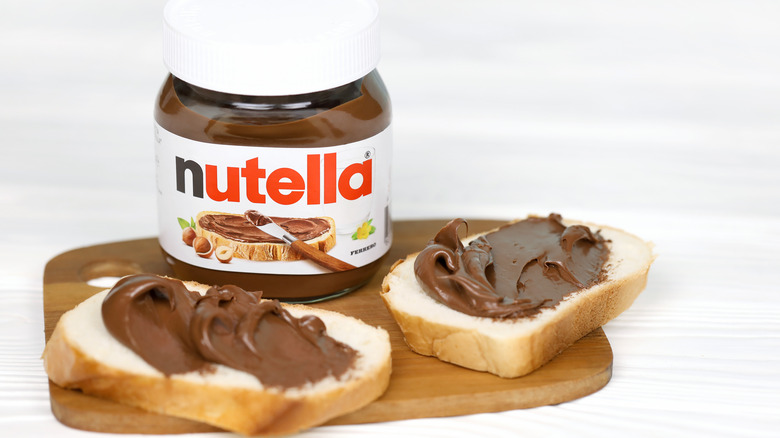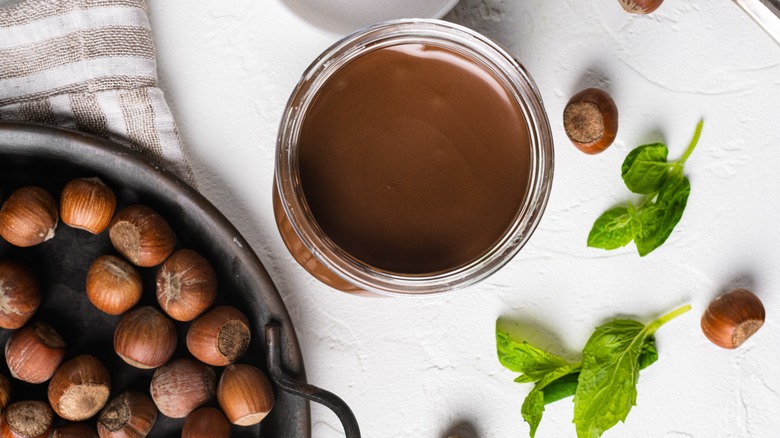Is There A Difference Between American And European Nutella?
Whether you slather your Nutella on a piece of toast of smear it on a crepe, the hazelnut chocolate spread is delicious. Copycats have long tried to capture the creamy and rich condiment, but nothing quite compares to the original that was created in the mid-20th century in Italy.
Nutella was first sold in 1964, according to Italy Heritage, but its inventor Pietro Ferrero began experimenting with making a spread from cocoa and hazelnuts in 1925. The spread was called pastone (translated to pastry mesh) and served on bread to factory workers as a sandwich. It was soon a spread that was also much loved by children. After World War II, when cocoa was hard to come by, the ingredients of pastone changed, according to Nutella.com. It was now made primarily of hazelnuts and sugar with just a little bit of cocoa.
The paste became known as giandujot (named after a carnival character) in 1946 and was shaped like a loaf. According to Nutella.com, in 1951, the name was changed to SuperCrema and the consistency was changed to be more spreadable. It wasn't until 1964 that Nutella in a jar was sold. As Nutella's success grew, so did its global sales. Throughout the 1970s, Jars of hazelnut spread started being sold in other countries (via Snack History). Once uncommon on American store shelves, according to the Washington Post, it's now found in nearly all grocery and box stores that sell groceries.
Thicker and nuttier
In the decades since Nutella was first introduced to the American market, it's become a much-loved treat and cooking ingredient in recipes like Nutella French Toast. But does it differ from the jars of Nutella sold in Europe? According to Nutella enthusiasts, there are some differences.
Both Serious Eats and Jim Webster of The Washington Post contend that the European version of Nutella is less sweet and has more hazelnuts. Webster writes that when a scoop of each is taken from the jar, the European version is firmer compared to the American version. According to Serious Eats, when comparing labels, the ingredients are very similar. The ingredients in both the European and American versions include sugar, palm oil, hazelnuts, cocoa, skim milk, and vanillin, which is an artificial flavor. Where the two jars differ, Serious Eats states that it is possibly with their hazelnut and milk content. The Italian version is made of 13% hazelnuts and 5% milk. The American version? Serious Eats states that it doesn't specify. However, it does state that there are more than 50 hazelnuts in every 13-ounce jar.
What most people agree is that whether the jar was made for the European or American market, Nutella is delicious.

